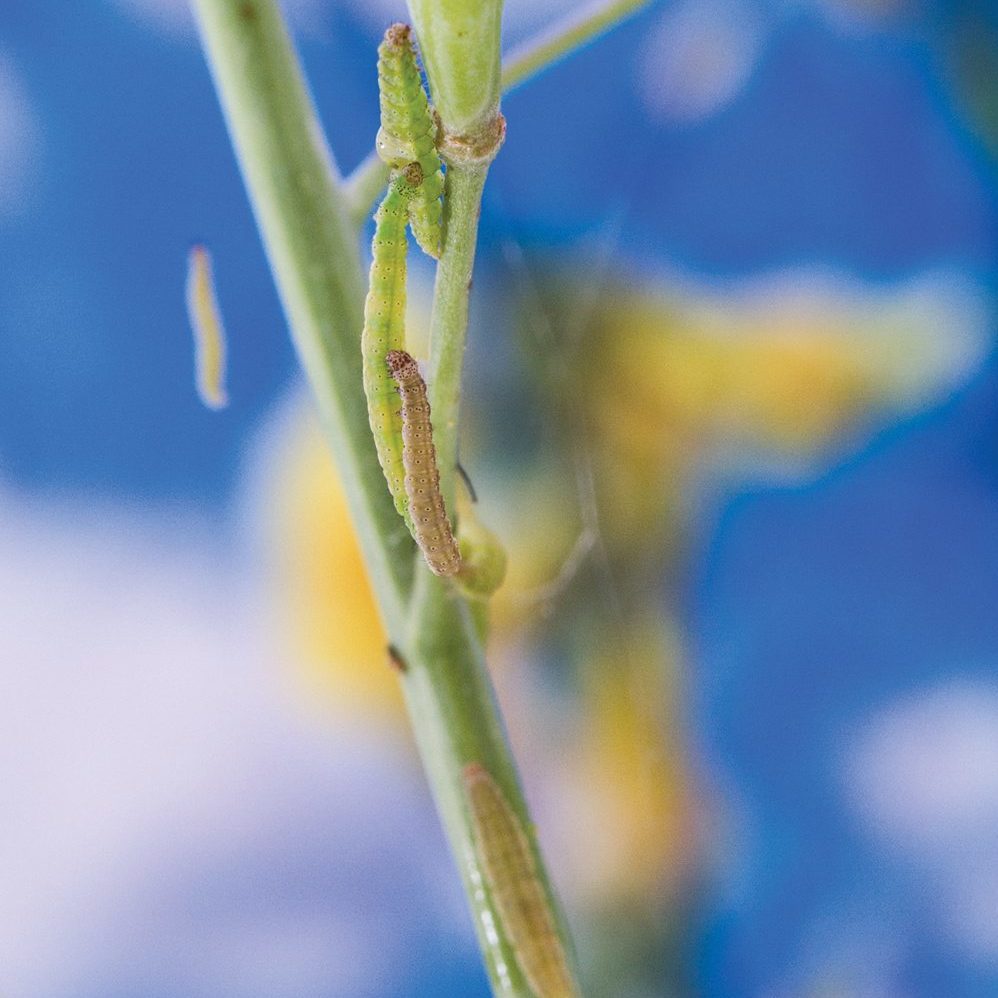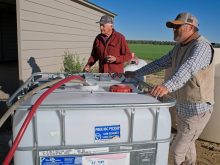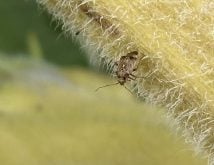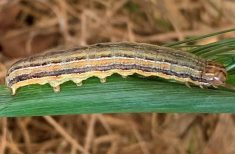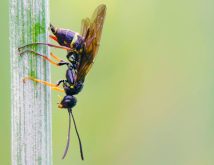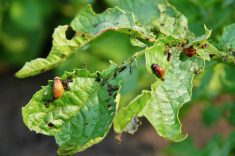Last year’s growing season was a freakish one for diamondback moth in Western Canada, and while the probability that an outbreak of this calibre will be seen in 2018 is very low, the possibility is always there. Knowing what to do and when to act can help you to get this insect pest under better control.
While diamondback populations occur throughout Western Canada each growing season, the severity of the infestation varies from year to year. Outbreaks are hard to predict, as the insect pest — as far as the experts know — doesn’t overwinter in Canada. Instead, it makes its way north from the southern and western U.S., sometimes from even as far as Mexico. The diamondback moth is capable of producing as many as four generations each year. The earlier they arrive and the better the conditions, they more they reproduce.
Read Also
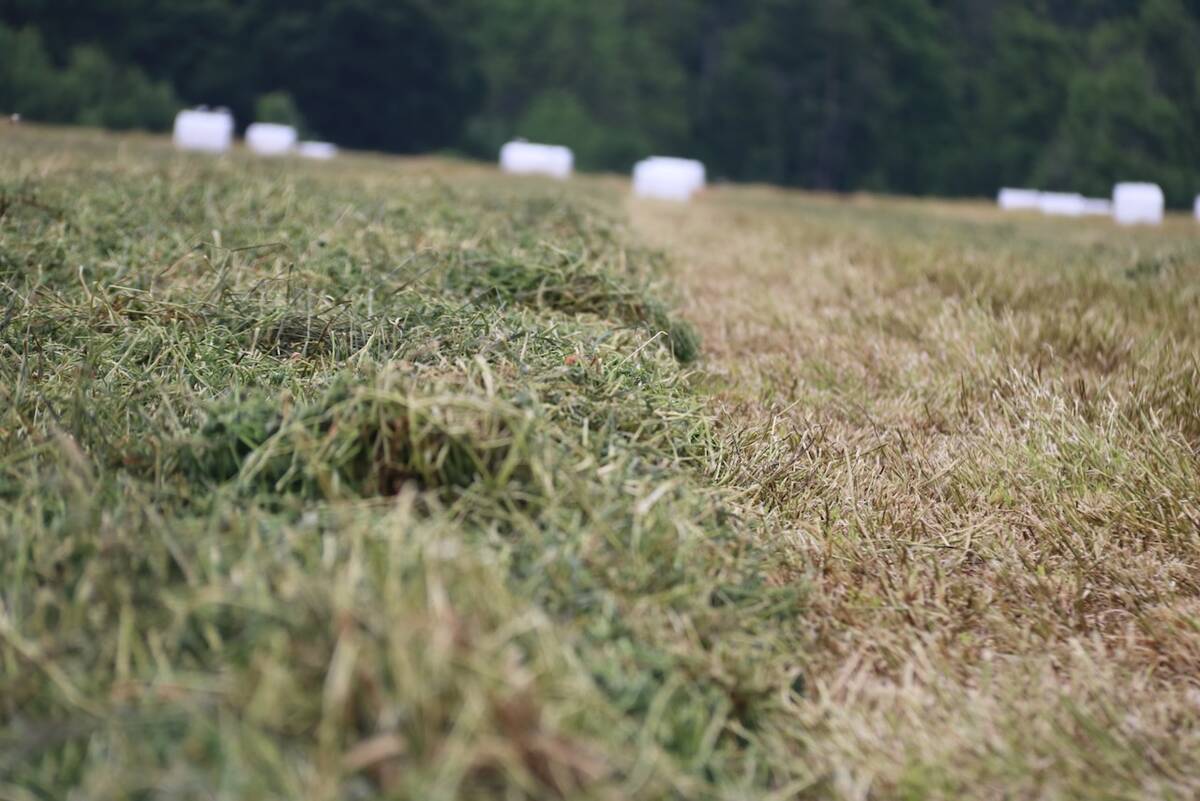
New high-performance forage training program to launch in 2026
A new Canadian Forage and Grasslands Asssociation high-performance forage program will be a resource for farmers, agronomists and others in the forage sector.
Scott Meers, insect management specialist with Alberta Agriculture and Forestry, tracks the moth’s movement each year. He described last year’s flight as “nothing special.” However, in his 36 years in agriculture he has never seen anything like last year’s outbreak. “This is by far the worst year for diamondback moth,” he said. “Nothing even comes close.”
The extent of the damage is hard to assess. Typically, about 4,000 to 5,000 acres are impacted, but Meers said, in Alberta, virtually every canola field south of Hwy. 1 that was worth spraying got sprayed. “That’s a lot of acres,” he said.
The first hint of trouble surfaced when producers were looking for cabbage seedpod weevil, so at early flower. “They were saying that they were finding an awful lot of diamondback moths,” said Meers.
What happened in 2017 can be best described as “the perfect storm.” Meers surmises that it had something to do with a combination of things, including a lack of beneficial insects and weather. The diamondback moth lifecycle ranges from 21 to 45 days depending on the environment they’re in.
“It’s essentially a temperature-driven timeline,” Meers explained. “And southern Alberta had so much hot weather that probably we were seeing faster development of the generations through the season.”
An economic problem
First, it should be noted that populations in one year do not impact the next, so growers need not worry about severe infestations arising next year as a result of this year’s unprecedented numbers. In many cases, the insect’s presence doesn’t impact crops economically at all, especially early in the growing season.
“Generally, we don’t consider early generations of the larvae to be economically important,” said Meers. “They’re mostly feeding on leaves and occasionally they’ll take out some flowers, but for the most part canola is able to compensate for flower loss.”
It’s the later generations that can be problematic. “Really, what we’re worried about is the larval feeding on pods,” he said. “The yield losses, actually, are more from shelling of the pod after the feeding damage than direct feeding losses.”
When to take action
A nominal threshold has been issued for diamondback moth, but Meers says it’s not well supported by science. “It’s just kind of what we think,” he said.
There’s a reason that economic thresholds are difficult to establish, but we’ll get to that later.
The Canola Council of Canada recommends that growers consider an insecticide application when there are 20to 30 larvae per 0.1m2 present at the advanced pod stage. If plant population is close to 100 plants/m2, this should work out to about two to three larvae per plant.
“But our experience this year was that that threshold didn’t serve us very well,” said Meers. “When we started seeing it on big acreages, it was difficult to measure and a lot of agronomists felt that it was not giving them a good read on the potential damage.”
Meers thinks part of the problem with the current nominal threshold could be that it doesn’t take crop health into consideration. “We had poor growing conditions, and so when we started looking at these numbers in a poor crop it seemed like lower numbers were doing more damage than we expected,” he said. “It was the perfect storm of a poor crop and lots and lots of insects.”
“It’s fair to say that we need to revisit the economic threshold for this insect,” Meers concluded.
But economic thresholds are not easy to establish in pests that don’t overwinter in Canada in large enough numbers to cause a problem every year. Héctor Cárcamo, entomologist with Agriculture and Agri-Food Canada, explained that in order to develop economic thresholds they would have to be able to predict where the pest will be — and that is something that they cannot do. He agrees with Meers, saying that nominal thresholds are based on “best guesses.”
One of the factors that these best guesses are based on is the presence of beneficial insects, which explains why even though populations are higher during the early part of the season, sometimes high numbers of larvae don’t appear later during the critical pod stage.
“The reason for that is that there are some parasitoids — some wasps, mainly — that can attack the larva and reduce the population substantially so that by the time the canola is at the pod stage you don’t see that many larva,” explained Cárcamo.
For this reason, he recommends that when considering nominal thresholds one should also take parasitoids into consideration. To do so, growers can dissect larvae to see if they have parasites feeding inside them. If you’re not sure, you could ask your provincial entomologist.
Western Canadian crop entomologists plan to get together in March where Meers says diamondback moth will be a hot topic, as will the question of economic thresholds. In the meantime, he suggests modifying the threshold based on what’s going on in the field.
“After a while, you kind of have to modify what you’re seeing for numbers and then modify your thinking on thresholds with what you’re seeing with crop as well,” he said. “That’s just an experience thing, unfortunately.


